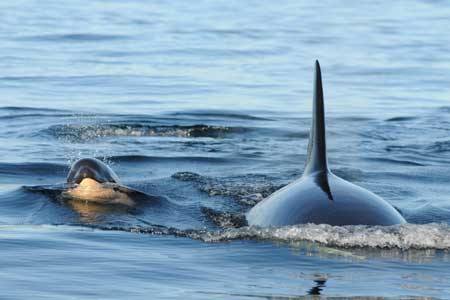The Southern Resident killers whales share something in common with Cook Inlet’s Beluga whales and the monk seals of Hawaii.
And, it’s not necessarily a good thing.
In fact, those marine mammals are among eight species that the National Oceanic Atmospheric Administration considers most at risk of extinction in the near future.
So, in its 52nd year of managing the federal Endangered Species Act, NOAA chose those eight to be the face of a new public education initiative entitled “Species in the Spotlight: Survive to Thrive.”
“We will be reaching out to the public through various means to raise awareness across the country about these species and identifying way the public can be more engaged, by learning about these species and their threats and by identifying specific action the public can take to help each of these species,” said NOAA’s Donna Wieting, director of the federal agency’s office of protected resources. “Efforts are underway now in each region to develop the action plans for each species which will specifically identify actions that the public, private and government sectors can take in this national conservation challenge.”
The Southern residents killer whales were listed endangered under the ESA in 2005. At that time, the population, made up of three closely related pods, J, K and L, consisted of 88 animals. Today, after a two-plus year drought of newborns more recently followed by three births, the population now numbers 80.
Late last year, the population had hit its lowest mark in more than 30 years.
The endangered eight represent imperiled marine creatures in all corners of the county, from East Coast to West Coast, and Alaska to the Hawaiian Islands in the Pacific.
Joining the three mentioned above are: Atlantic Salmon (Gulf of Maine), Central California Coast Coho, Pacific Leatherback Sea Turtle, Sacramento River Winter-run Chinook and White Abalone. A small percentage of ESA-listed species have been “de-listed” because they’ve recovered, but less than 1 percent of federally protected species have been de-listed due to extinction. Many more quite possibly would have, had in not been for the ESA, according to NOAA.




